Editor’s note: This piece is part of the ClassicCars.com Journal’s Muscle Month. We’ll be featuring stories, muscle cars and people during July about everything and anything that goes fast.
Following World War II, auto companies scrambled to regain their footing in an increasingly complex marketplace, with revolutionary designs and technology setting the trends. While the British, Italian, French and German automakers established signature styles, the U.S. companies became known above all for their sturdy and powerful V8 engines.
As the muscle-car era roared across America, some smaller European manufacturers latched onto American V8s as a drop-in solution for reliable performance.
Best-known of all of them was the Shelby Cobra, pioneered by American sports racer Carroll Shelby, who took the roadsters of AC, a British manufacturer, and turned them into the remarkable Cobra 289 and Cobra 427 with an infusion of Ford V8 power.
Another sports-car brand that followed that formula was Sunbeam, a British company that installed Ford V8s in its diminutive Alpine roadster and called it a Tiger. Carroll Shelby also had a hand in this.
Some others who followed the muscle-car trend of jamming big, high-torque American V8s into decidedly European automobiles (and this list is by no means inclusive, but just the most high-profile examples) were:
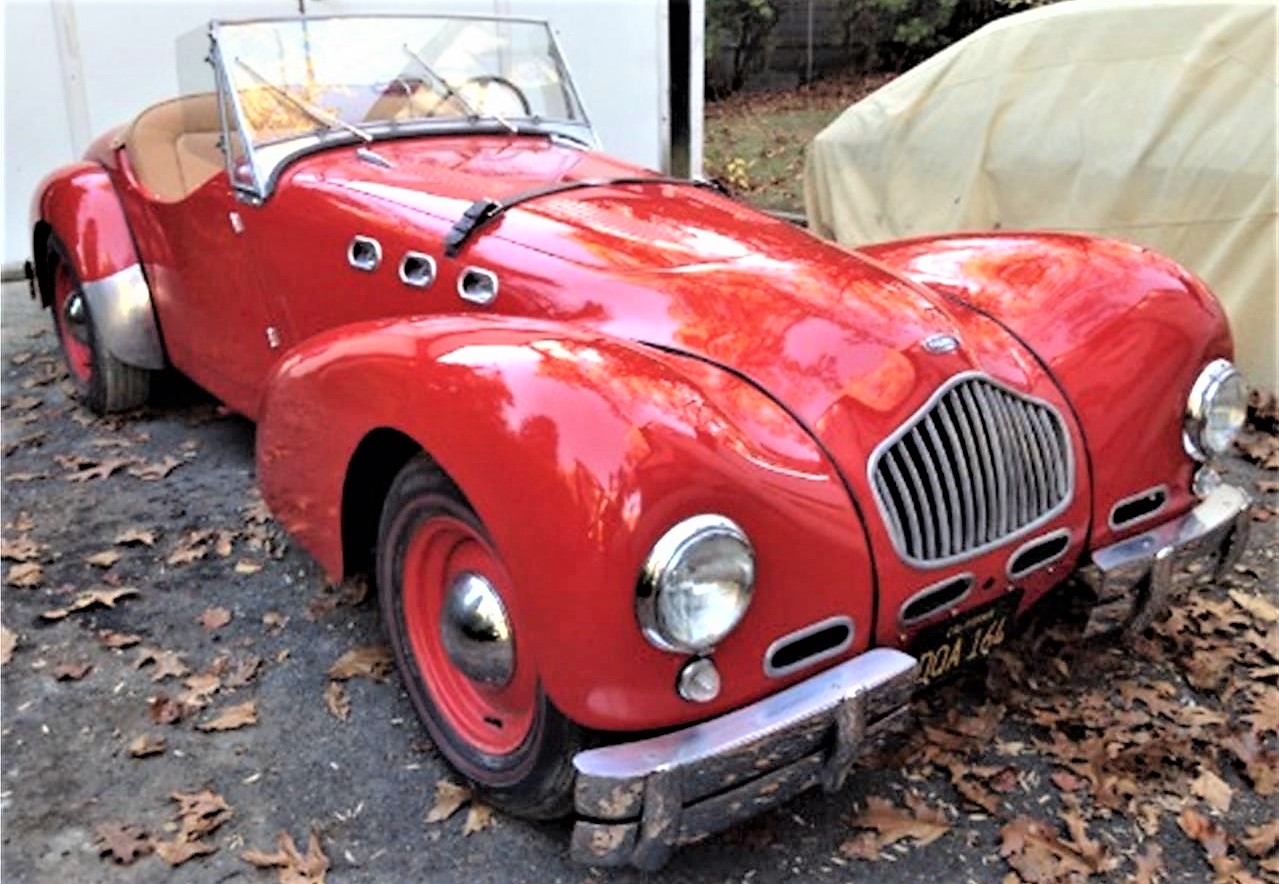
Allard
Founded in London by motorsports fanatic Sydney Allard in 1945, Allard Motor Company was a small-production company that equipped its sports and racing cars with V8 engines from Ford, Mercury and Cadillac, foreshadowing the Shelby Cobra and Sunbeam Tiger. Just 1,900 Allards were produced through 1958, and they are highly collectible today. Most revered are the open-fendered J2 models and the big, full-fendered K and P cars.
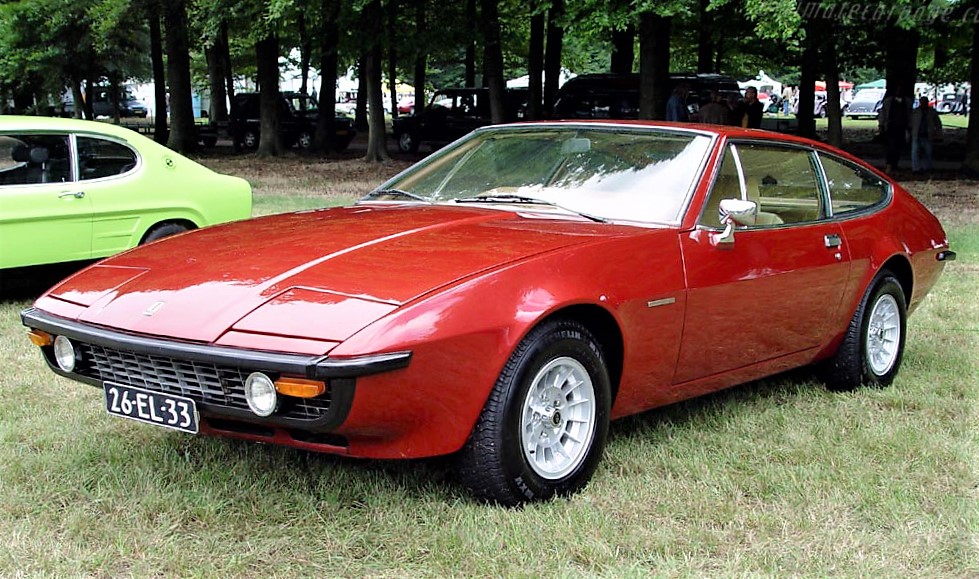
Bitter
This German brand, founded and headed by former race driver and designer Erich Bitter, built sports-luxury cars powered by Chevrolet small-block V8s. Based on the chassis of the Opel Diplomat, and with strong encouragement from the legendary Bob Lutz – who was at the time head of General Motors’ Opel division – Bitter produced exceptionally attractive coupes and convertibles styled in-house by Opel designers.

Bizzarini GT 5300
One of Italy’s most-renowned engineers, Giotto Bizzarini founded his own automobile company after serving with Alfa Romeo and helping to create some of Ferrari’s greatest road and racing cars, such as the iconic 250 GTO. He was part of the “palace revolt” at Ferrari in 1961 with many of the automaker’s brightest stars walking out. The Bizzarini GT 5300 Strada was his company’s most-stunning achievement, designed by Bertone and powered by a 5.3-liter Corvette V8 rated at 355 horsepower.
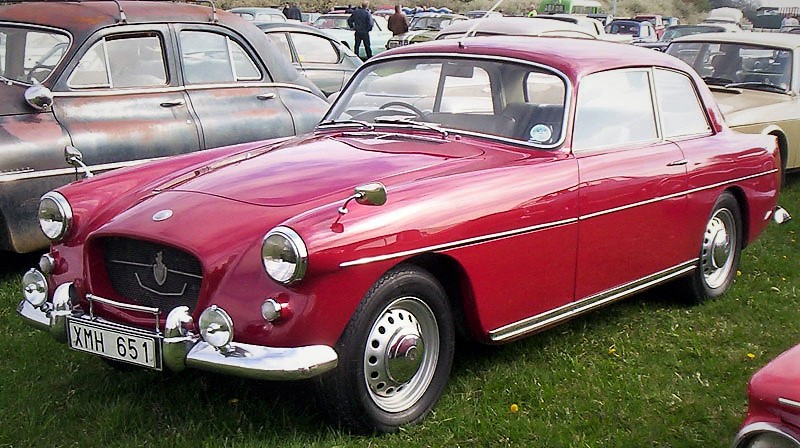
Bristol 407
Bristol Cars of Great Britain produced any number of exceptional automobiles after World War II, mostly powered by BMW-derived Bristol 6-cylinder engines. But in the mid-’60s, the Bristol 407 took a step away from the routine with a handsome two-door sedan that looked not all that much different from its brethren except for what was under its hood: a 313cid Chrysler V8 that put the 407 solidly among Britain’s elite performance cars, and delivered a top speed of 125 mph.
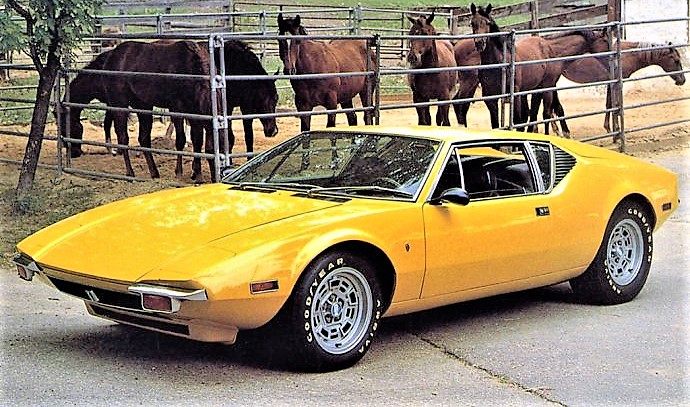
De Tomaso Mangusta and Pantera
Undoubtedly the best known among this group, the Mangusta and Pantera were mid-engine cars with all the design and styling excellence of the Italian manufacturers but powered by rock-solid Ford V8 engines. The Mangusta came first, equipped with a Ford 289, followed by the legendary Pantera with a 351cid Cleveland V8 nestled behind the two occupants. The Pantera achieved popular U.S. culture with a roar, including such things as a heavy-metal rock band named after it and Elvis Presley eschewing his usual Cadillacs in favor of a bright-yellow Pantera.

Facel Vega
After supplying bodywork for a number of European automakers after the war, French manufacturer Facel began seeing its auto-body business drying up. So the company decided to step up with its own eponymous car brand. Facel launched the stylish, American-influenced Vega FV in 1954, powered by a DeSoto Firedome Hemi V8 engine, followed by the Vega FVS, which grew in Mopar power, and the HK500, which was propelled by a 360-horsepower, 6.3-liter Chrysler Hemi V8. An infamous fact: Nobel laureate writer and philosopher Albert Camus was killed in a crash while riding in an HK500 driven by his publisher, Michel Gallimard, who also died.
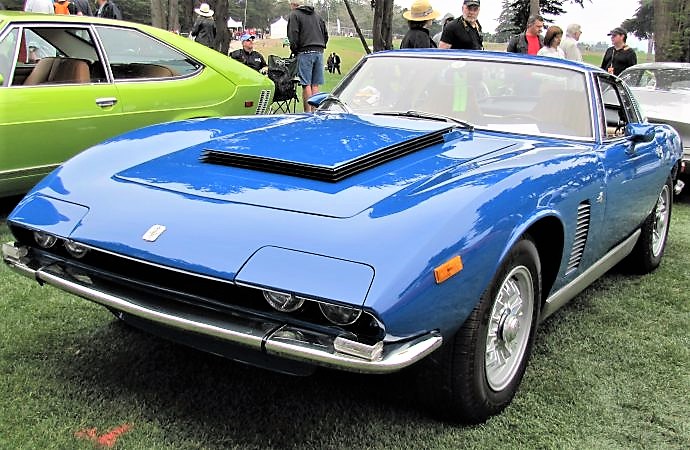
Iso Rivolta and Grifo
Giotto Bizzarini returns for the story of Iso (pronounced EE-so), a car company that first came to world attention after its development of the Isetta bubble car, which it licensed to a number of world manufacturers, most famously BMW. But Bizzarini along with famed designer Giorgetto Giugiaro and company owner Renzo Rivolta took the brand in a radically different direction by producing a brawny lineup of performance cars, most notably the various Grifo models powered by either Chevrolet or Ford V8 engines.

Jensen Intercepter
British automaker Jensen Motors re-christened its Interceptor with an all-new model in 1966, a grand-touring car with a greenhouse rear window and powered by a succession of Chrysler V8 engines, ranging in displacement from 330 to 440cid, through 1976. The aggressive styling was by Touring of Italy, and the cars were hand-built at a factory near Birmingham, England.



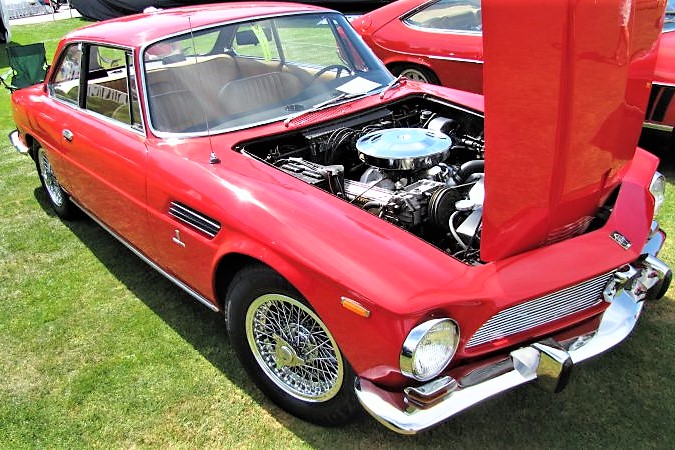


This is GREAT !! Always an appreciator of Euro-Amer. hybrids. Best of all possible worlds, if you could pull it off. Not mentioned were: Dual-Ghia; Stutz; Griffith (Apollo); Reisner-Cumberford Omega/Tornino; Intermeccanica (Indra); and, Burt Sugarman’s Ghia 450SS. A few TVR’s came with Ford V-8 power but, like the foregoing, most barely reached series production so may not (technically) belong in your essay.
Ooh, I remember one of the original Rat Pack guys having a Kick A** Facel Vega (Martin? O’Toole?). Saw an Iso with a SBC/4spd at a show when I was a kid in the early ’70’s, along side what appears to be a SBC powered Bizzarini; old Polaroid not clear enough to be sure. Had a roomie in the mid-’80’s that had a real 289 Sunbeam Tiger; that exercise was good on paper, but in my direct personal experience it: a) couldn’t hook up and could overpower the rubber in any gear; b) was so nose heavy that, even with the aftermarket (wider) Minilites and era performance rubber would plow like a Deere unless one kicked the back out most luridly; c) leaked like the Titanic from every seam, and worked better if you just left the top down in the pouring rain and relied on the tonneau; d) caused insurance agents to have their misbegotten offspring apply to Harvard; and, e) not only couldn’t outrun my slammed 440/auto ’73 Newport (built, I admit), but was eaten alive on the streets of Indianapolis by our other roomie’s new Scirocco- every time.
That’s not to say a super tail-happy cobbled up sports racer isn’t fun- who doesn’t like doing the Beach Boys "rubber in all four gears"? Roomie delivered for Domino’s in the thing, and the Cherry Bombs/straight pipes most certainly hustled those pies, ‘cuz, well, back down (popple-snap, gurgle) and punch. 289 has always had a great sound wound up (and down), and lurid drifting became the future of small, big motored cars, did it not?
We need more Euro/American hybrids, not less. Many have put GM LS series motors into Miatas, why not put a Ford Coyote or Voodoo(!) into, say, a Boxter? All the best Italian designers are banging out "specials" for Aston Martin, Bentley, Jaguar, and their home market- why not a 7.0 blown LS in the bay of, say, a limited edition TVR repop? Those were some out-there lookin’ cars, why not supersize ’em? (See the movie "Swordfish" to get an idea of TVR). Ditch the generic V8 in Jag’s new station wagon (shooting brake)- drop a flat crank Voodoo in there and give it a real 6spd, so Jeeves could smoke all four on the way to pick up the kids at soccer (futbol) practice. Time is money, right? No one who is really alive wants slow transportation modules; screw those robots, ‘n’ add a blown V8!
-R